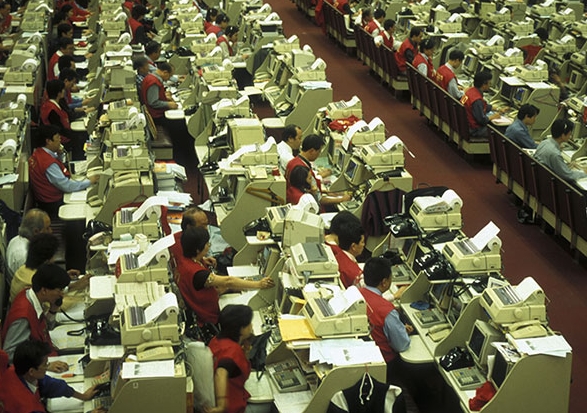Vital Signs: economy limps towards more rate cuts
The announcement of two important and, it turned out, depressing pieces of economic data is more evidence that advanced economies are suffering from secular stagnation, writes Richard Holden.
The announcement of two important and, it turned out, depressing pieces of economic data is more evidence that advanced economies are suffering from secular stagnation, writes Richard Holden.

Data snap: Week beginning January 18, 2016
| Date | Data release | Latest | Previous |
|---|---|---|---|
| Tuesday 19 | China GDP year-on-year December qtr | 6.8% | 6.9% |
| Tuesday 19 | IMF World Economic Outlook 2016 global growth forecast | 3.4% | 3.6% |
| Wednesday 20 | US Inflation Rate year-on-year December qtr | 2.1% | 2.0% |
| Wednesday 20 | Westpac/Melbourne Institute Consumer Confidence change (Australia) | -3.5% | -0.8% |
OPINION: This week saw the announcement of two important and, it turned out, depressing pieces of economic data. Neither of them concerned Australia directly, but both have big implications for the Australian economy.
China’s year-on-year GDP growth for the final three months of 2015 was 6.9%. This may sound great compared to the roughly 2.5% delivered by Australia and the United States, but is in fact the lowest rate in China since its massive economic modernisation began a quarter-century ago.
That was followed by the International Monetary Fund’s world economic outlook updatewhich trimmed its forecast of global growth from 3.6% to 3.4% for this year, and similarly for 2017.
The basic reaction reported in the Australian press was along the lines of: “Yes, we knew China couldn’t keep growing so fast forever, but this is worse than we thought. And that’s more bad news for commodity prices and export volumes.”
Bond markets also responded by pricing in a 100% chance of an RBA rate cut by June of this year — which is exactly the rational response to a slowdown in our key export sector.
Ho. Hum.
What got much less attention was the IMF report also forecast that the US economy would grow at only 2.6% in 2016 and 2017, and the eurozone at a sclerotic 1.7%.
This is the truly bad news. It is more evidence that advanced economies are suffering from secular stagnation, an idea that former US Treasury Secretary Larry Summers has been pushing for some time. Essentially, the economic speed limit of advanced economies has nearly halved due to an overabundance of savings chasing too few productive investment opportunities.
Just think of all those billionaires and sovereign wealth funds looking for something to invest in at a time when the US$268 billion market capitalisation of Facebook can be created in a Harvard dorm room with a few thousand dollars and a great idea.
For Australia this means GDP growth with a 2 in front of it for the foreseeable future.
It also makes two RBA rate cuts this year more likely than one; will put the federal budget under even more strain; and make the sluggish wage growth we have seen likely to continue.
There aren’t too many good answers, but one is to provide all those savings with some productive investment opportunities. The Turnbull government’s plan to develop Australia’s North through loan guarantees — not providing the money itself, but making people believe that others believe private investment will happen — is a good example.
Richard Holden is Professor of Economics, UNSW.
This opinion piece was first published in The Conversation.
Vital Signs is a new weekly economic wrap from UNSW economics professor and Harvard PhD Richard Holden (@profholden). Vital Signs aims to contextualise weekly economic events and cut through the noise of the data impacting global economies.